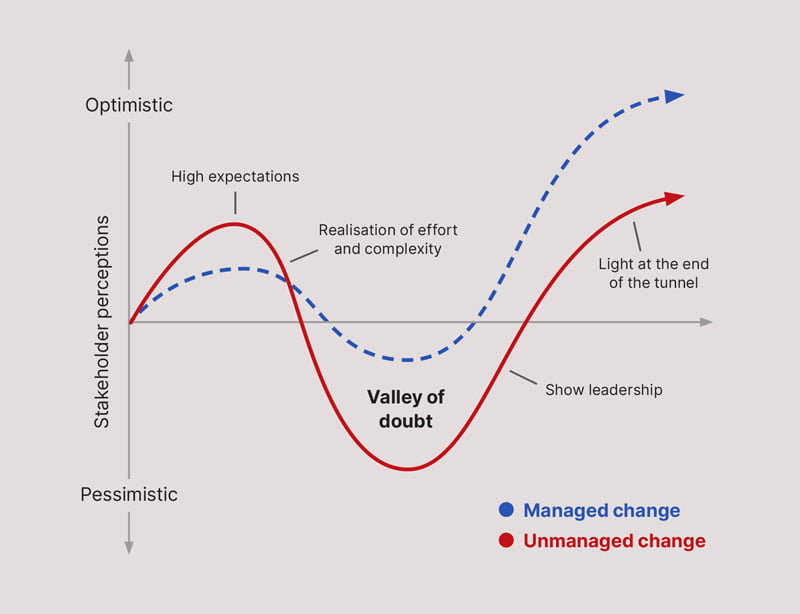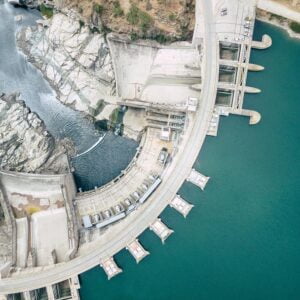Once you have a clear mandate to progress towards alignment or compliance with ISO 55001, we recommend that you follow the steps in this article in order to gain that alignment.
This is the twelfth in a series of 13 articles on Implementing ISO 55000.
Articles in this series
As mentioned in our first article “Starting on the Right Foot,” getting ready to start the journey will require as a minimum:
- Getting leadership buy-in
- Getting input from stakeholders
- Getting alignment internally on where the value lies
- Determining your approach to compliance with the standard which could either be one of Certification, Compliance or Alignment.
- Identifying high-level funding and resource requirements
- Building a roadmap for the journey.
Although the above already sounds like a journey in itself this will set you up to start the bulk of the work towards compliance (or alignment or certification) ‘on the right foot’. Once you have a clear mandate to proceed we recommend stepping through the journey as shown below.

ISO 55001 readiness assessment
To gain an understanding of where the major gaps in your asset management system are the first step usually is to do a Readiness Assessment. This could be done internally or externally and should provide you with a high-level assessment of your organisations level of maturity and whether it will be feasible to embark on the journey. The readiness assessment will typically assess the existence and level of application of the foundation documents and should give you an opinion on where to start.
Develop the asset management system.
Next you need to Develop Your Asset Management System. Our recommendation would be to set the foundation first. The diagram below shows a logical sequence of how the building blocks of an asset management system can be established.

When developing your asset management system, start by ensuring that the asset management foundation documents are in place, namely:
Processes and procedures follow, since the foundation documents will mandate their requirement and their relative priority. These, in turn, dictate the Organisational Structure required to execute them. Specific Support Tools will be identified when processes and procedures are developed. Next training and coaching will be required to build Competence in applying the Processes Procedures and Tools. Given competent personnel, an organisation is then in a position to Execute the actions from the SAMP and AMPs, whilst following the processes and procedures developed. Performance measures need to be set up to measure performance against process requirements and against the requirements from the SAMP and AMPs. The results are then Measured, and Improvement is undertaken.
There, all done – too easy. But what is the golden thread that makes this work and makes this a ‘live’ system that influence how people on all levels of the organisation think? And how do you build an Asset Management system while people still have day jobs?
Two aspects that bind this system together are Leadership and Organisational Change Management.
In Part 7 of the series – Organising for Effective Asset Management: Leadership the importance of establishing an ‘Asset Management Champion’ with the right level of authority is discussed. A visible champion amongst senior leadership will be able to lead the journey and deliver results.
Organisational Change Management ensures that all levels of the organisation are engaged and informed to ultimately change the culture of the organisation. The diagram below (adapted from the Kübler-Ross Grief Curve) shows that to move an organisation from blissful ignorance when ISO 55000 ‘sounds like a good idea’ to a fully developed and adopted management system – requires a minimum of 2 activities to be done well.
First there must be engagement with the business across functional boundaries. Here the emphasis is on providing information about what Asset Management means to the Organisation and on clearly articulating the benefits that are being pursued.
Second, after 6-12 months of developing content, the process requires a ‘champion’ to push through and implement the changes required by the new policy, plans and procedures and make it stick. This is primarily done through visibly leading by example; showing others how it’s done.

Throughout the journey a level of Project Management will be required to make sure it all happens in a logical, efficient and effective order. Potentially the first SAMP will have an objective namely to “Implement an ISO 55001 Compliant Asset Management System” with allocated resources and timelines endorsed by senior management.
Project management is a key component to delivering a comprehensive asset management system through your journey to compliance. Although leadership and change are important, there usually is a fair amount of actual work that needs to get done. Planning and resourcing this journey could be challenging since this require extra effort from people over and above their normal duties. Active management of timelines and risks will be required to ensure the work gets done. A project schedule is a must, and regular management review will be required to ensure sustained progress.
Once the system have been developed you may be ready for a detailed gap assessment.
Detailed gap assessment
Deciding exactly when to do the detailed gap assessment is a question of value. If you haven’t started developing your Asset Management System, or the system is very immature, the detailed gap assessment might not deliver much value. The detailed assessment can be done:
- Prior to development of your Asset Management system in order to assist with developing the project plan for development and implementation,
- During the development of the Asset Management System in order to guide its progress, or
- After your Asset Management System has been implemented and running for a few months in order to identify potential for fine-tuning or improvement or as a precursor to formal certification.
You may decide to perform these detailed assessments at all these key milestones.
When performing a detailed gap assessment – there are a few options here:
- Internal assessment using the IAM Self-Assessment Methodology
- External Assessment using consultants.
Ideally, you would want to use a Certified Asset Management Assessor (Internal or External) that will be able to give you a clear indication of where the gaps lie in your asset management system. The detailed gap assessment involves a period of data and document reviews followed by interviews to back-up and confirm the documented information, and to confirm that the organisational behaviours required by the ISO 55001 standard and your documented Asset Management System are in place.
Bridge the gap
After the detailed gap assessment, attention can be focused on bridging the gaps and using and improving your asset management system.
Operate and fine-tune
In this phase the organisation would have implemented processes and systems that now need to be operated, measured, audited and improved.
From here certification might be an option to pursue if you so wish. Look out for our next article in this series for more information on Certification.
Looking for further training in ISO 55001 certification?
We offer a range of asset management courses, some of which specialise in ISO 55001 deliverables. If you are interested in reading more about our courses, you can do so by following the links below.
-
Product on sale
 Implementing an ISO 55001 Compliant Asset Management SystemOriginal price was: $2,275.00.$2,047.50Current price is: $2,047.50.
Implementing an ISO 55001 Compliant Asset Management SystemOriginal price was: $2,275.00.$2,047.50Current price is: $2,047.50. -
Product on sale
 Asset Management Foundation AwardOriginal price was: $1,195.00.$1,075.50Current price is: $1,075.50.
Asset Management Foundation AwardOriginal price was: $1,195.00.$1,075.50Current price is: $1,075.50.


